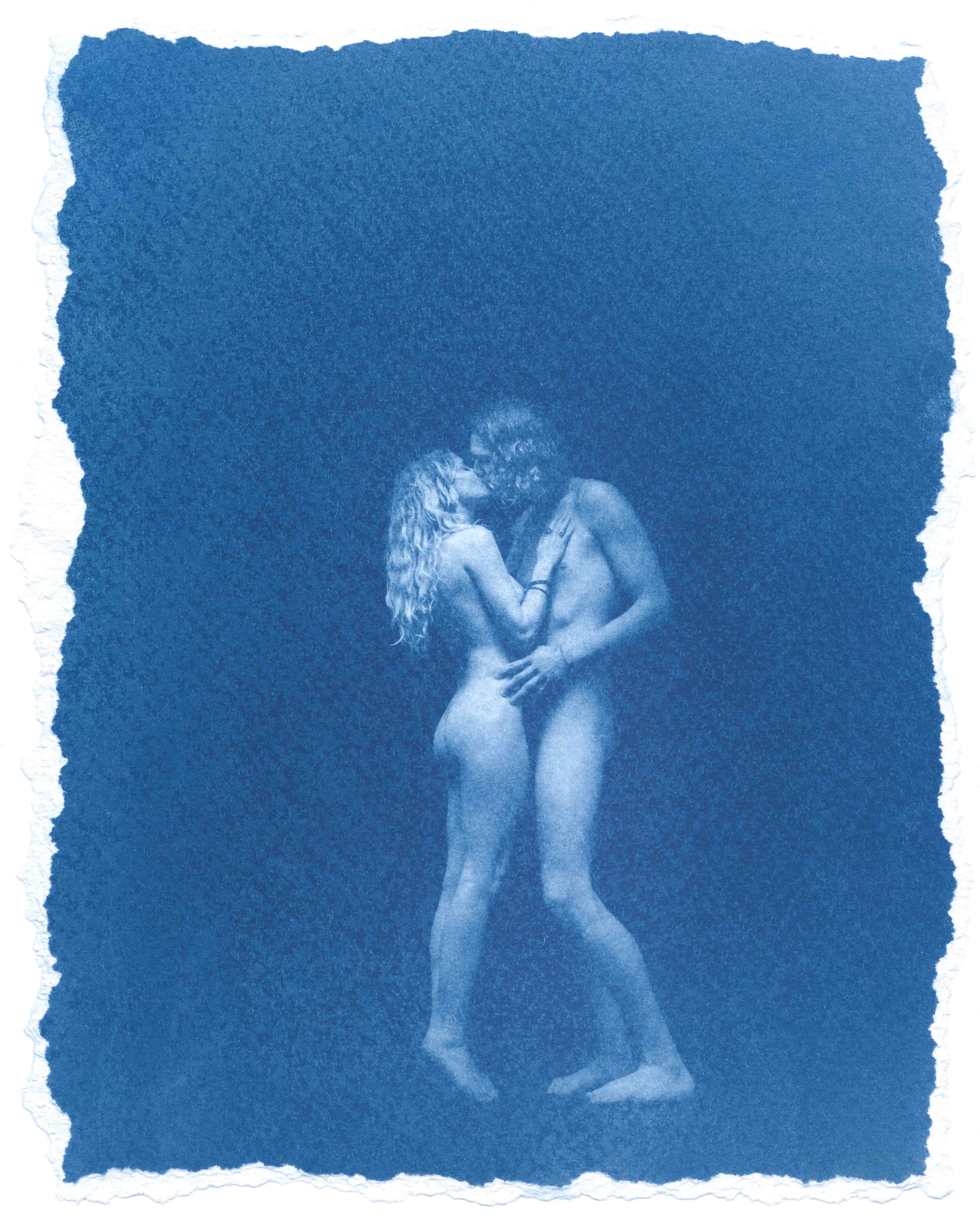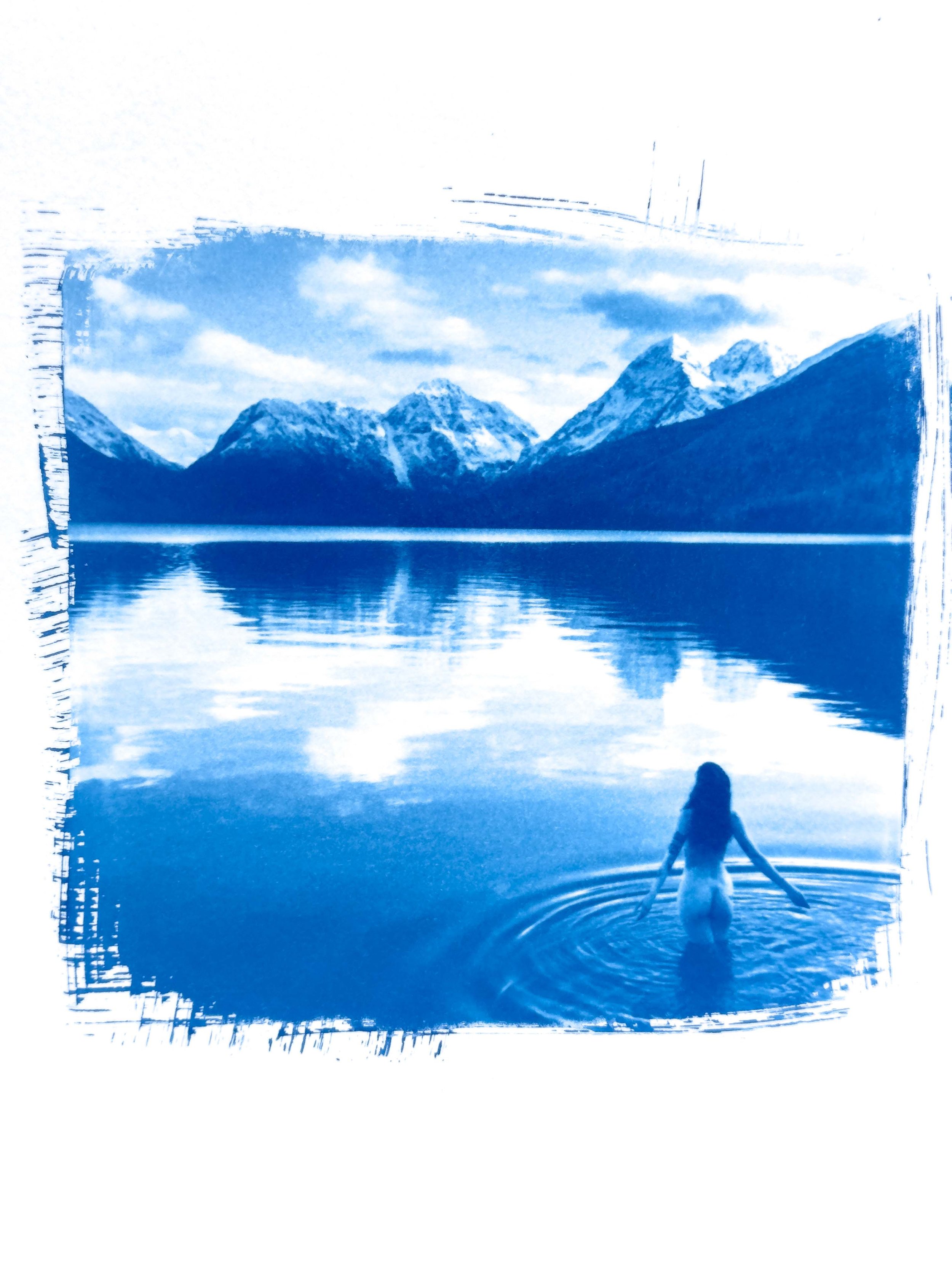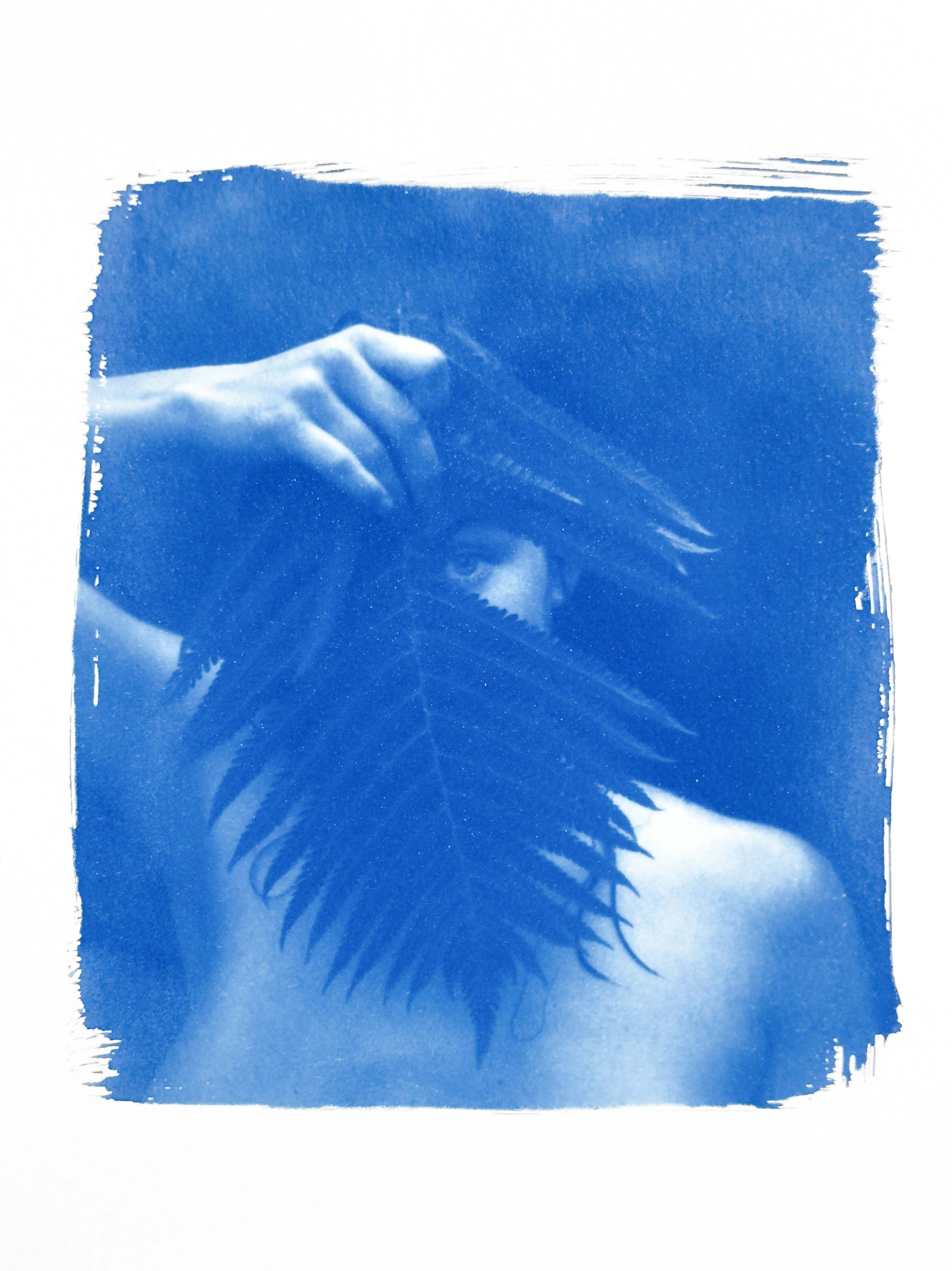cyanotypes
in 1842 a dude named john herschel was looking for a way to copy his handwritten notes in a world without xerox machines. he figured out that if you dissolve two types of iron salts in water you create a yellowish light-sensitive solution. if you coat a piece of paper with this solution and leave it in the sun it turns grey-green. if you then rinse it in water it turns a deep blue — and any area not exposed to uv light washes away to white, creating a photo negative.
herschel didn’t do much with this discovery, but his friend anna atkins did. she was an artist and naturalist who made watercolor paintings of botanical specimens but was annoyed by their imprecision. over the next few years she used the cyanotype process to create the first published book of photography. she exposed ferns, algae, and other plants on cyanotype-sensitized paper to create “photograms” — photos, taken without a camera, of the specimens she’d once painted.
cyanotype is the simplest, cheapest, and least toxic of photographic processes. it doesn’t require a darkroom, the two chemicals involved are easy to procure and relatively safe, and anyone can learn it in about 20 minutes. this made it popular among amateurs, but scorned by “serious” photographers. it was quickly relegated to women and people who couldn’t afford the time or materials needed for the higher end processes. by the early 1920s it had been co-opted by architects (blueprints were made by cyanotype) and was more or less written out of the history of photography.
it’s made a resurgence in recent years, but even now is seen as more of a craft than an art. it’s the ugly stepchild of photography — too much of a hassle to be in common use but not as flashy as daguerrotype or wet plate collodion or other popular throwback processes.
this is what i love about it. it's a democratic medium: a photographic art form accessible to anyone with running water, sunlight, and a few bucks to spare (you can get a pre-mixed set of the chemicals for under $20) -- and it's no less beautiful for that accessibility.




